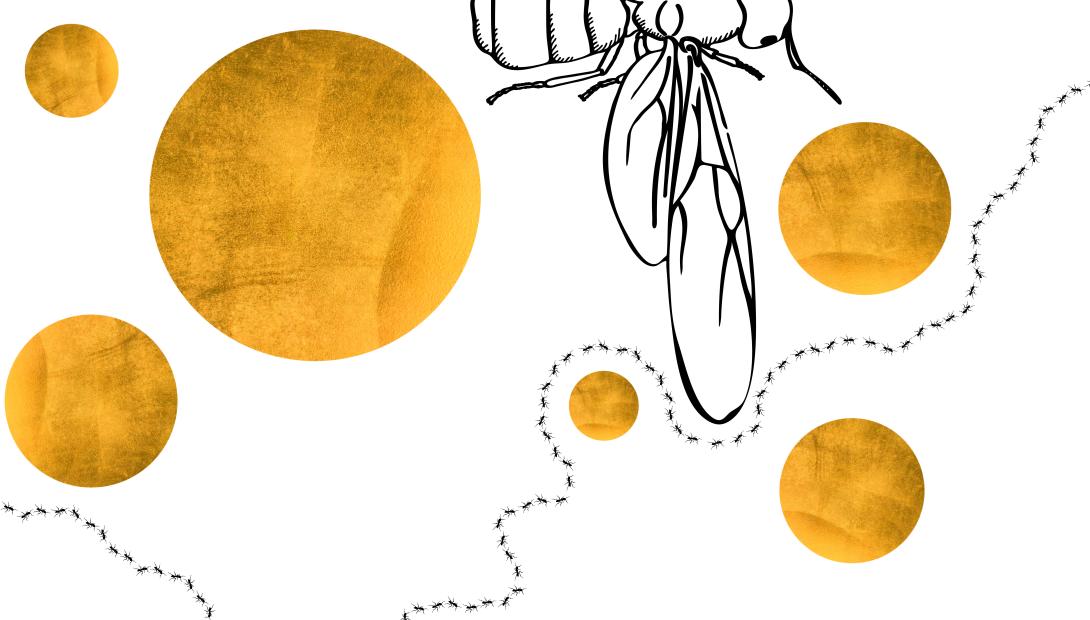
Neighbours and uninvited guests
Ant nests are also home to a wide range of other animals that have managed to adapt to living among ants or near them. They are called myrmecophilous species.
The Large Blue Phengaris arion
A species of day-flying butterflies that is protected in Latvia. Its development cycle is closely linked to that of the red ants.
The female lays her eggs on thyme. After hatching, the larva feeds on the flowers and buds of the plant.
Later, it falls to the ground and gives off a smell that attracts ants. When the ant finds the larva, the larva secretes a sweet liquid from a special gland, which the ant licks up. At this point, the caterpillar takes on the smell of the ant.
The ant takes it to its nest and adopts it, because it considers the larva to be belonging to the colony. In the nest, the butterfly caterpillar will feed on ant larvae. The larvae of the large blue cannot complete their development outside of ant nests.
Clown BeetleHaeterius ferrugineus
It is found in wood ant nests. They feed on dead ants and other organic debris, but may also feed on ant eggs or larvae, or initiate food transfers in ants.
Ant CricketMyrmecophilus acervorum
It is fully adapted to living in ant nests – it has lost its wings and has poorly developed eyesight. Unlike the related grasshoppers and crickets, it cannot produce or perceive sounds. The Ants’-nest Cricket feeds on both ant eggs and larvae, and initiates the transfer of food in ants.
Sap beetleAmphotis marginata
They live near the nests of the Jet Ant Lasius fuliginosus. They usually stay near nest entrances or along ant paths. It waits for the ants that return with a full crop and, by mimicking the communication of ants with its tentacles, initiates the transfer of food. The shape of the body of the beetle is specifically adapted to protect it against ant bites – for in cases where the deceit is discovered.
Heath Ant hover fly Microdon analis
Their larvae live inside the nests. They are predatory – they feed on ant eggs and larvae.
Four Spotted Leaf BeetleClytra quadripunctata
The female covers the eggs with a layer of faeces. This attracts wood ants, which deliver the eggs to their nest. After hatching, the larvae of the beetle form a special hard-shelled house that serves as protection and helps them camouflage. The Four Spotted Leaf Beetle larvae mostly feed on ant larvae.
Rove BeetleLomechusoides strumosus
During the warm season, they stay and breed in the nests of wood ants, and spend the winter with the red ants.
Beetles and their larvae secrete an addictive liquid from their abdominal glands. In return, the ants feed both the rove beetle and their larvae, and in addition, the beetles eat ant larvae.
Northern Rose ChaferProtaetia metallica
The caterpillars live in the outer part of wood ant nests, in places where ants are less common. They feed on decaying plant and wood parts in the nest.




